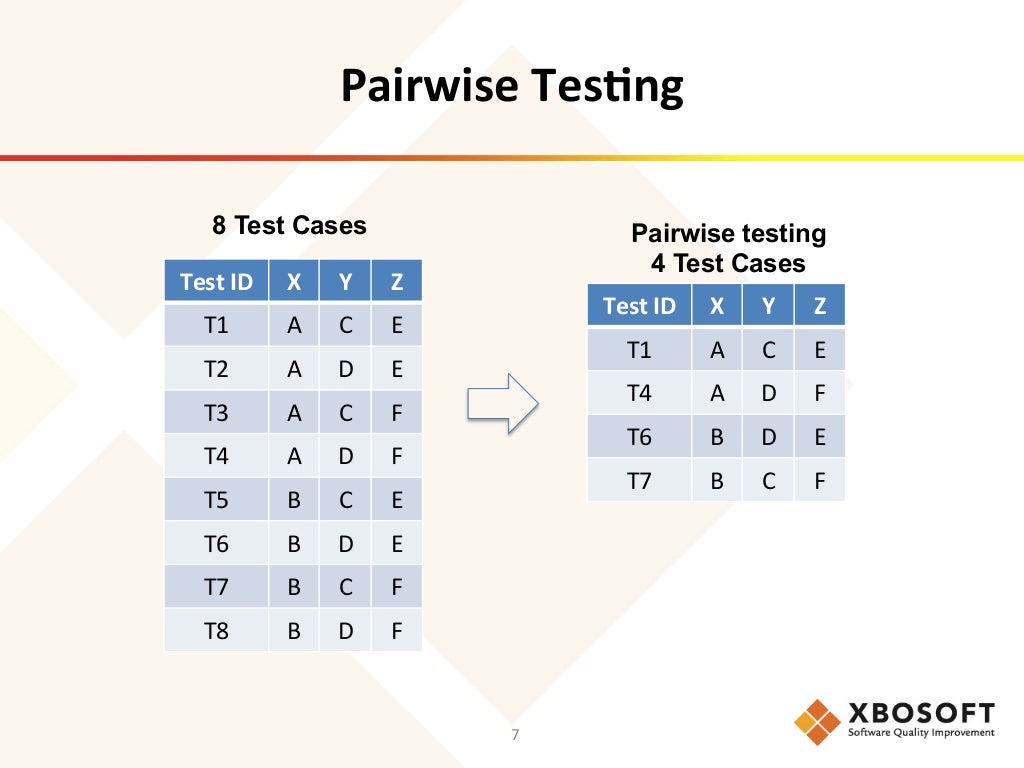As artificial intelligence (AI) continues to be able to evolve, the intricacy of AI devices, particularly AI code generators, has improved significantly. These methods are designed in order to generate code structured on various advices, making them an excellent tool for programmers. However, ensuring the reliability and correctness of such AJE systems poses important challenges. Pairwise tests, a combinatorial testing technique, offers a new structured approach to be able to tackle these challenges. This article is exploring the challenges involving applying pairwise tests to AI code generators and suggests solutions to defeat these hurdles.
Comprehending Pairwise Testing
Pairwise testing is the method that focuses on testing almost all possible pairs associated with input parameters to recognize defects that arise due to the particular interaction together. The primary advantage involving pairwise testing is usually its efficiency: alternatively of testing each possible combination of input parameters, that only tests a new subset of sets, which can nonetheless provide a large level of problem detection.
In the context of AI code generators, pairwise screening involves generating analyze cases that concentrate in making almost all possible pairs regarding input parameters of which the AI might encounter. This method is intended to uncover defects that happen from specific blends of parameters, which in turn might not become evident when variables are tested throughout isolation.
Challenges throughout Applying Pairwise Tests to AI Computer code Generator
Complex Type Spaces: AI code generators often work with highly complicated and diverse suggestions spaces, including numerous data types, code snippets, and encoding languages. This difficulty makes it challenging to define plus manage input guidelines for pairwise tests.
Solution: To handle this challenge, it’s crucial to categorize insight parameters into unique classes and define meaningful boundaries regarding each class. Methods such as website analysis and boundary value analysis can help in identifying representative test cases. Additionally, tools that assistance combinatorial testing may be used to automate the era of test instances based on typically the categorized parameters.
Dynamic Behavior of AJE Systems: Unlike standard software, AI code generators exhibit energetic behavior because of the reliability on machine understanding models. A similar type might lead in order to different outputs depending on the model’s state or the particular training data employed.
Solution: To control the dynamic characteristics of AI devices, it’s important to include model monitoring in addition to version control. By simply maintaining records of numerous model versions and the behaviors, testers can ensure that pairwise testing results are consistent and relevant to the current unit. Additionally, incorporating stochastic testing methods alongside pairwise testing can help capture variability inside the AI’s behavior.
Interdependence of Parameters: Throughout AI code power generators, input parameters often have complex interdependencies which are not always apparent. This specific interdependence can lead to challenges in ensuring that most relevant pairs are covered.
Solution: Utilizing advanced pairwise tests algorithms that account for parameter dependencies can easily mitigate this concern. Techniques such as constraint-based pairwise assessment can help within identifying and handling these interdependencies. Effort with domain authorities can also give insights in to the interactions between parameters, increasing the effectiveness involving therapy process.
Scalability Issues: The sheer number of probable parameter pairs could make pairwise assessment computationally expensive, specifically large-scale AI program code generators with numerous input parameters.
Option: Leveraging optimization methods and heuristics can help in managing scalability issues. For why not try here , algorithms that prioritize testing combinations dependent on their possibility of revealing flaws can reduce the particular number of test cases needed. Furthermore, parallel processing and cloud-based testing platforms can be applied to handle large-scale testing efficiently.
Top quality of Test Files: The effectiveness involving pairwise testing seriously relies on the quality of test data employed. In the context of AI program code generators, generating high-quality test data that accurately represents real-world scenarios can become challenging.
Solution: Using techniques for instance info augmentation and manufactured data generation may help in producing diverse and top quality test datasets. Working together with domain specialists to ensure the particular test data addresses a wide selection of real-world situations can further improve the quality of the test cases.
Coping with Unexpected Outputs: AJE code generators may well produce unexpected or even non-deterministic outputs, making it difficult to examine the correctness of the results from pairwise testing.
Option: Implementing robust end result validation mechanisms will be crucial. Automated outcome validation frameworks may be used to compare the generated code against expected outcomes or predefined criteria. Additionally, combining human review operations for critical circumstances can ensure that unexpected outputs usually are thoroughly evaluated.
Incorporation with Development Pipelines: Integrating pairwise assessment into the advancement and deployment sewerlines of AI code generators can always be challenging, specially when interacting with continuous the use and continuous application (CI/CD) environments.
Solution: Incorporating pairwise screening tools and frames that are appropriate with CI/CD devices can streamline the integration process. Software and scripting can assist in seamlessly incorporating pairwise testing into the development workflow. Regular updates and maintenance of the testing tools are also essential to be able to ensure compatibility using evolving development practices.
Conclusion
Applying pairwise testing to AI code generators gifts several challenges, which includes managing complex input spaces, coping with powerful behavior, and ensuring scalability. However, simply by leveraging advanced screening techniques, optimizing analyze case generation, and incorporating robust acceptance mechanisms, these challenges can be successfully addressed. Pairwise testing remains a valuable approach in the quest to guarantee the reliability and even correctness of AI code generators, providing a structured method to uncover defects and even improve the overall good quality of AI-generated signal.
